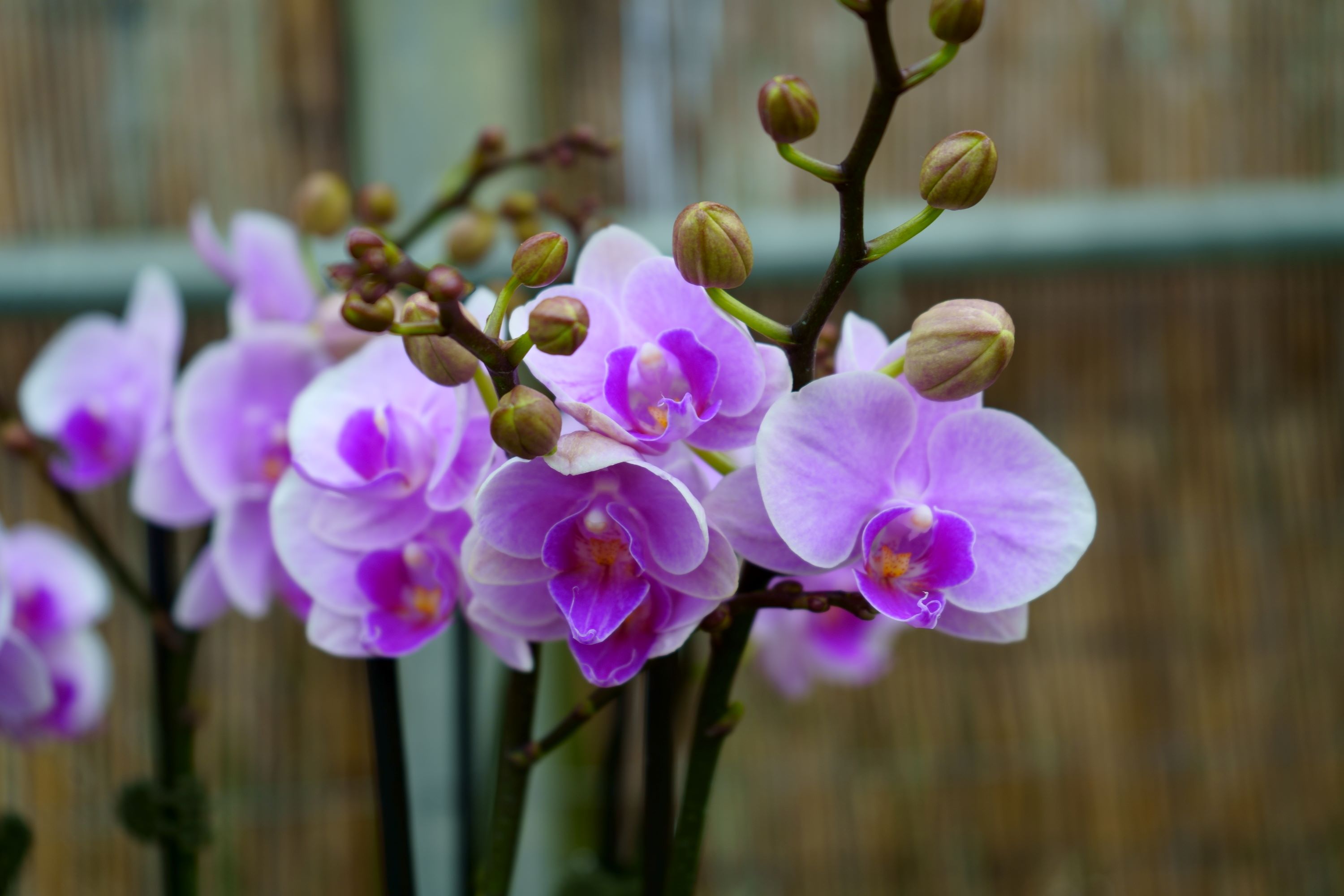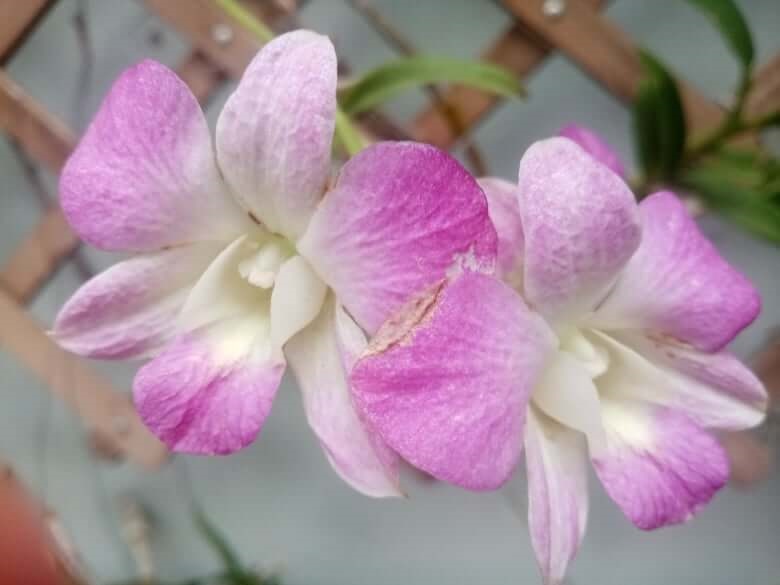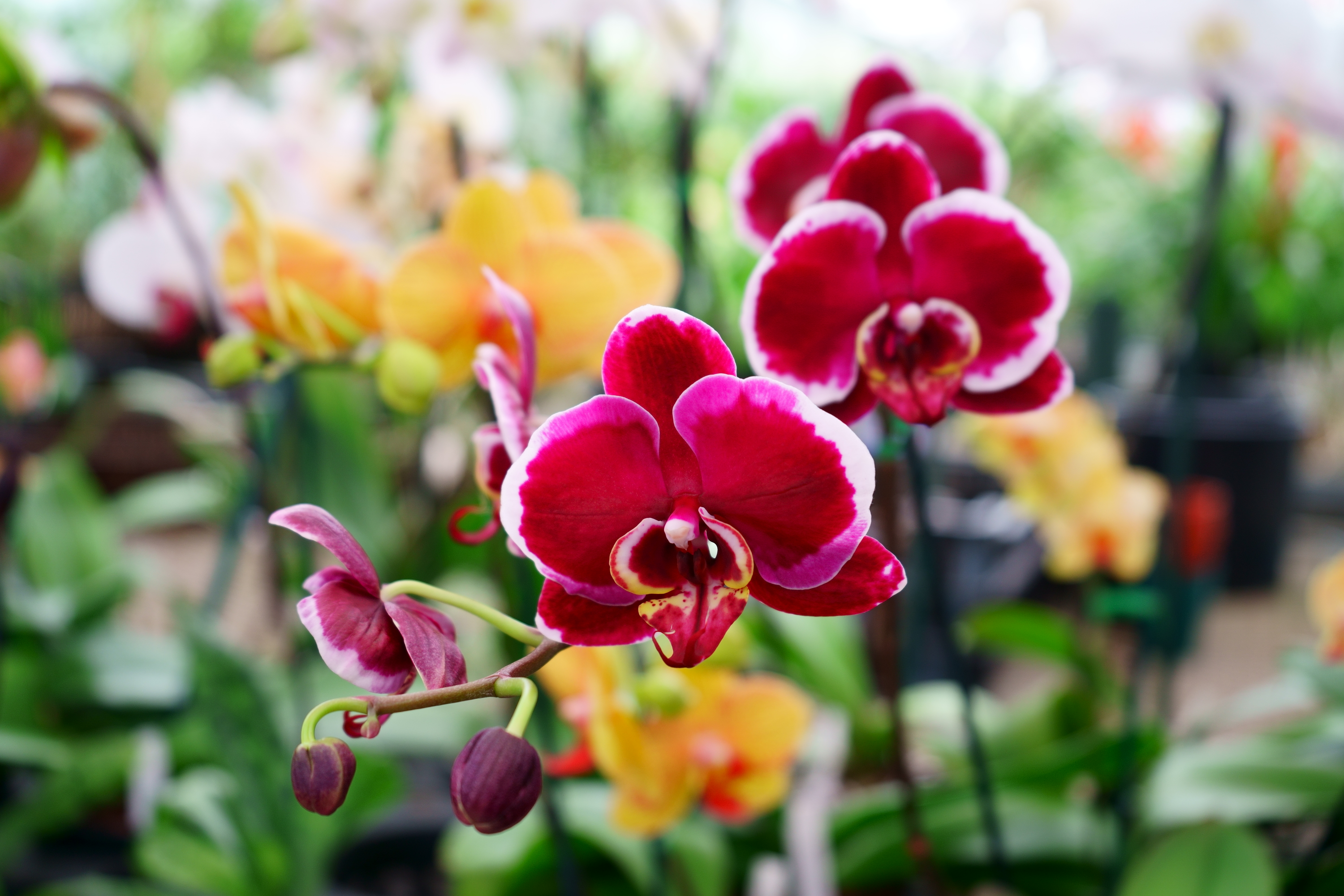Do Orchids Need Sun?
In answer to the question about do orchids need sun; sunlight is essential for the growth and development of all plants including orchids; however, it is important to provide the right amount of light to avoid damaging the plant. With most orchids, it is important to only allow direct sunlight in the very early morning or late afternoon when the intensity of the sun is at a low level. Some orchids prefer brighter conditions than others, so it is crucial to know what kind of orchids that you are growing in order to provide then with the right growing conditions.
The amount of sunlight that orchids need varies depending on the type of orchid, its growing conditions, and its stage of growth. Generally, orchids require moderate to bright indirect light to grow and produce healthy blooms. Too much direct sunlight can cause damage to the leaves and flowers, while too little sunlight can lead to weak and anemic growth.
Most orchids prefer bright, filtered light that is not too intense. This means placing them in a location that receives bright but indirect sunlight for most of the day. A north-facing window is a great place to keep orchids as they will receive bright light without being exposed to direct sunlight. If you are growing orchids indoors, you may need to supplement their light with artificial grow lights to ensure they get the amount of light they need.
Orchids also require a period of darkness to grow and develop properly. This means that they should not be exposed to light twenty four hours a day, as this can disrupt their natural growth patterns. It is recommended to give orchids around twelve hours of darkness per day to allow them to rest and prepare for the next day's growth.
During the winter months, orchids may require more light than during the summer months, as the days are shorter and the light is less intense. If you are growing orchids in a greenhouse or other controlled environment, you may need to adjust the lighting to ensure that the orchids receive the appropriate amount of light throughout the year.
Orchids are known for their elegance, beauty and grace, and each species of orchid has its own unique requirements for sunlight. Let's explore the sunlight requirements for some of the most popular orchids:

Phalaenopsis:
Phalaenopsis orchids, also known as moth orchids, are one of the most popular orchids because they are relatively easy to care for. Many Phalaenopsis can do well in relatively low light conditions, but will also thrive in bright, indirect sunlight. They should always be kept away from direct sunlight as it can burn their leaves and lead to the demise of your beautiful orchid. Phalaenopsis orchids do best in east-facing windows or shaded south-facing windows. Phalaenopsis as well as the rest of the orchids mentioned in this article can always be supplemented with artificial light in order to provide them with their light requirements.
Cattleya:
Cattleya orchids are known for their large, showy blooms and require more light than Phalaenopsis. They prefer bright, indirect sunlight for several hours a day, but should be protected from intense afternoon sun. Placing Cattleyas in a location where they can receive direct early morning or late afternoon sun can be very beneficial to their happiness. Cattleyas can be placed in a shaded south-facing window or grown under artificial grow lights to provide the necessary amount of sunlight. In addition, Cattleyas like humid conditions in order to thrive. Placing a humidifier in your orchid grow room will provide Cattleyas with the proper conditions to thrive.
Miltoniopsis:
Miltoniopsis orchids, also known as pansy orchids, do well in relatively low light conditions. They require luminous, indirect light and like all orchids should be protected from direct sunlight with the exception of very early morning or late afternoon sunlight. Miltoniopsis can be grown in east-facing windows or shaded south-facing windows.
Oncidium:
Oncidium orchids, also known as dancing lady orchids, require moderate to bright, indirect sunlight. They can be grown in a south-facing window, but should be protected from direct sunlight. Oncidiums can also be grown under artificial grow lights to provide the necessary amount of sunlight.
Vanda:
Vanda orchids are known for their large, sometimes fragrant blooms and require bright, indirect sunlight for several hours a day. They should be protected from intense afternoon sun and can be grown in a shaded south-facing window. Artificial grow lights can be of enormous value to Vanda orchids, especially if you cannot find the perfect spot in your home. Vanda's need regular light fertilizing and plenty of bright indirect light in order to rebloom.
Brassia:
Brassia orchids, also known as spider orchids, require moderate to bright, indirect sunlight. They can be grown in a south-facing window or under artificial grow lights, but should be protected from direct sunlight. Brassia orchids can also be grown in east-facing windows or shaded south-facing windows.
Masdevallia:
Masdevallia orchids are known for their vibrant and unique blooms, and they require bright but indirect light. Direct sunlight can burn their leaves and damage their blooms. Masdevallia orchids do well in east-facing windows or shaded south-facing windows. They can also be grown under artificial grow lights, but care should be taken to avoid intense light. Masdevallia orchids prefer cooler temperatures, so they may benefit from being placed near a window that receives morning sunlight and is shaded in the afternoon.
Paphiopedilum:
Paphiopedilum orchids, also known as slipper orchids, require less light than Masdevallia orchids. They prefer bright but indirect light, and can be grown in an east-facing window or shaded south-facing window. Paphiopedilum orchids should be protected from direct sunlight, as it can damage their leaves and flowers. They can also be grown under artificial grow lights, but care should be taken to avoid intense light. Paphiopedilum orchids prefer warmer temperatures than Masdevallia, so they may benefit from being placed near a window that receives afternoon sunlight.
Final Thoughts: Do Orchids Need Sun?
The sunlight requirements for orchids vary depending on the species. Different genus and species of orchids have different light level requirements. Masdevallias, Miltoniopsis, Phalaenopsis, and some Paphiopedilums will do best in low light to bright shade conditions. Brassias, Cattleyas, Miltonias and Oncidiums like brighter indirect light conditions and Brassavolas, some Cattleyas and Vanda's do best in very bright light conditions. All orchids can benefit from some grow light supplementation It is important to provide the appropriate amount of light for your orchids to ensure their healthy growth and blooming.


